
THE XERCES SOCIETY FOR INVERTEBRATE CONSERVATION Aquatic Invertebrates in Pacific Northwest Freshwater Wetlands |
| Identify taxa |
| Gyrinidae (whirligig beetles) Each eye is divided into two separate top and bottom sections that may touch or form two completely separate eyes. Short, clubbed antennae; middle and hind legs are flattened and oar-like. |
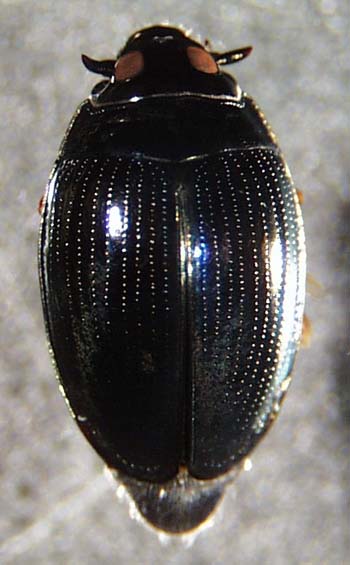   |
||
| Elmidae (riffle beetles) Small robust body (<10mm); long threadlike antennae. Legs are not oar-shaped and lack hairs. |
   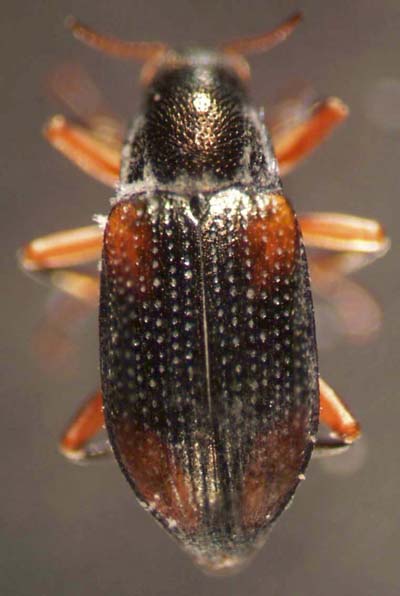 |
||
| Dryopidae (long-toed water beetles) Similar to elmids, but antennae are short and thick, with short, expanded, comb-like terminal segments. |
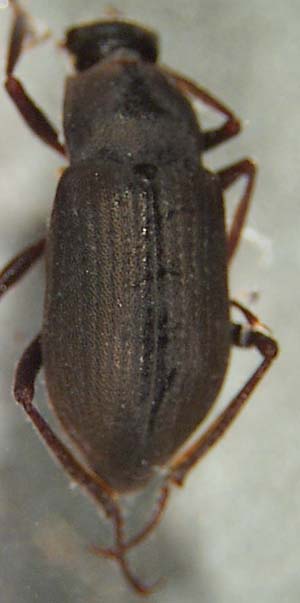 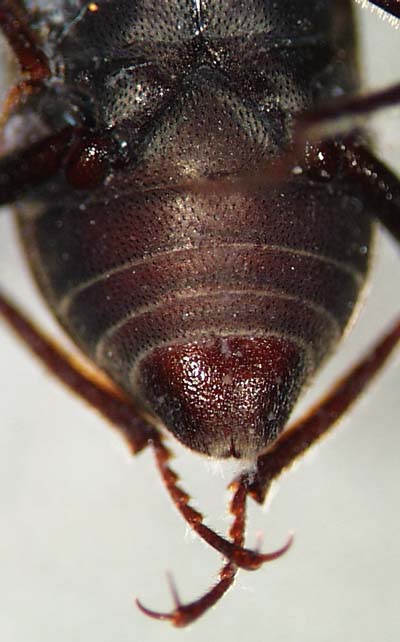 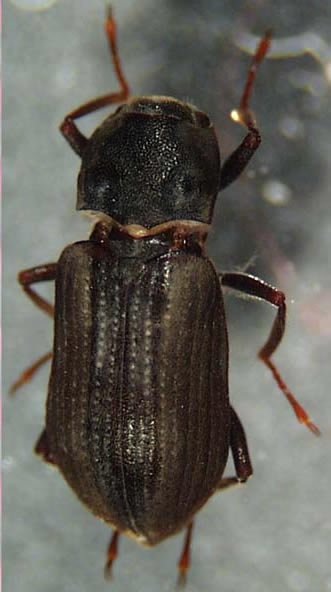 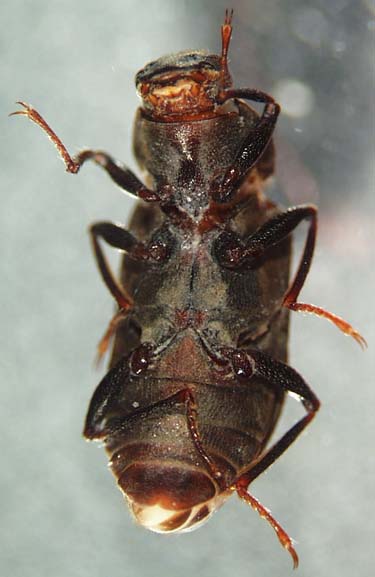 |
||
| Haliplidae (crawling water beetles) A pair of large ventral plates cover the bases of the hind legs and most segments of the abdomen. Hind legs may have swimming hairs. Robust convex body, >2mm, often patterned or spotted. |
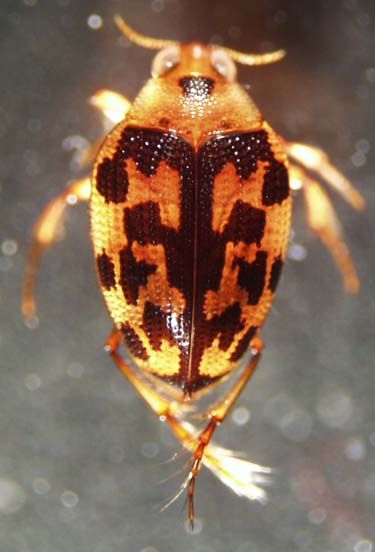 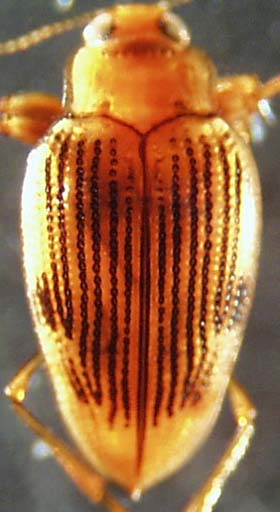 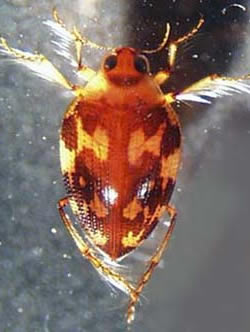 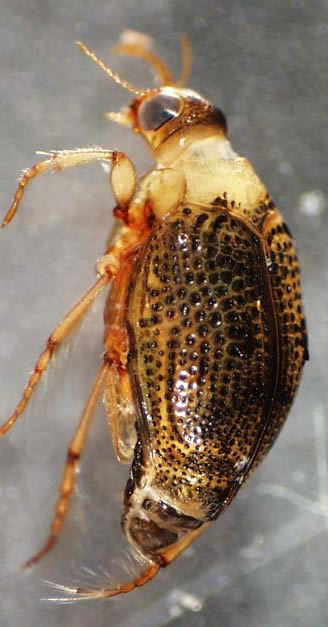 |
||
Curculionidae |
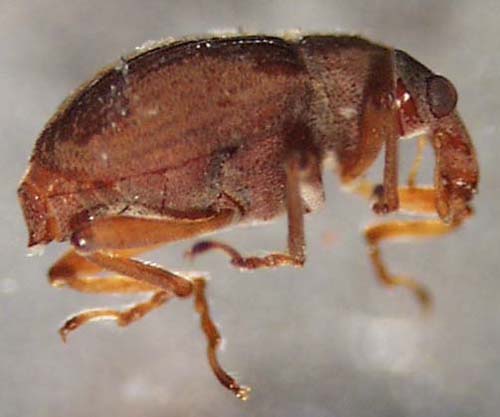 |
||
| Noteridae (burrowing water beetles) Streamlined, robust, convex oval bodies without a visible scutellum. Tibia of the front leg forms a long hook that projects laterally from the remaining leg segments. Antennae are long and threadlike, with all segments of equal length. Easily confused with Dytiscidae. |
|||
| Dytiscidae (predaceous diving beetles) Very diverse family, generally with streamlined, robust, convex oval bodies and long threadlike antennae. Most easily confused with Noteridae, but front legs lack a tibial spur, and the scutellum is often visible. |
  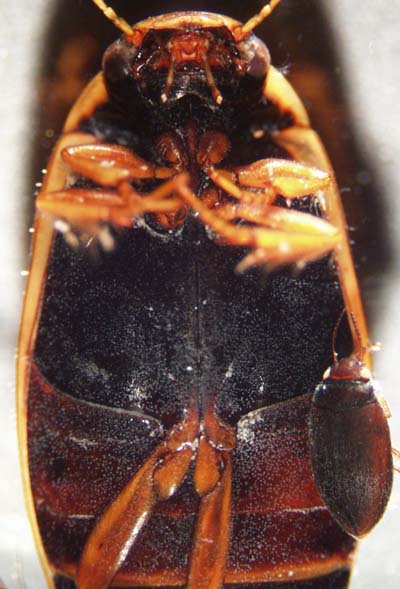 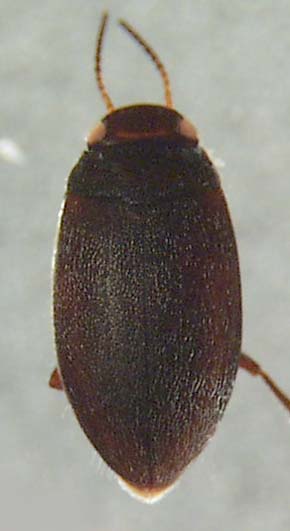 |
||
Hydrophilidae |
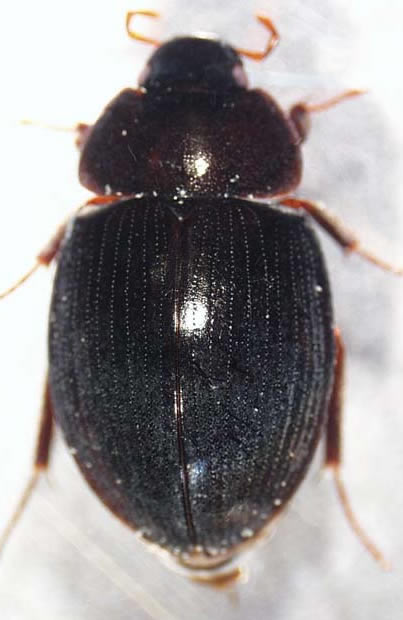  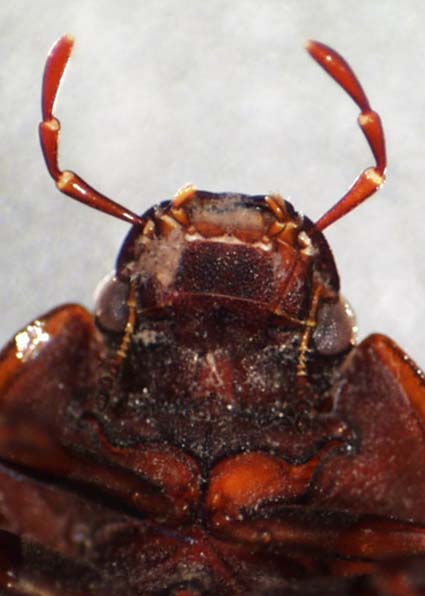 |
||
| Sphaeriusidae (Microsporidae) (minute bog beetles) Tiny oval body <1mm long. Body is convex and glossy; antennae have small clubs at tip. Thin plates from the underside of the thorax cover much of the underside of the first couple abdominal segments (similar to Haliplidae). |
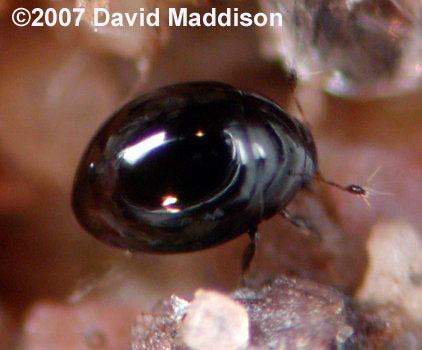 |
||
Coleopterans uncommon in wetlands |
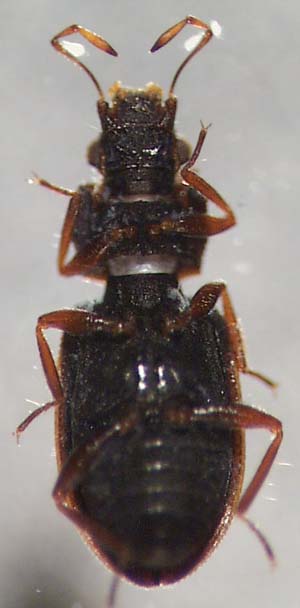 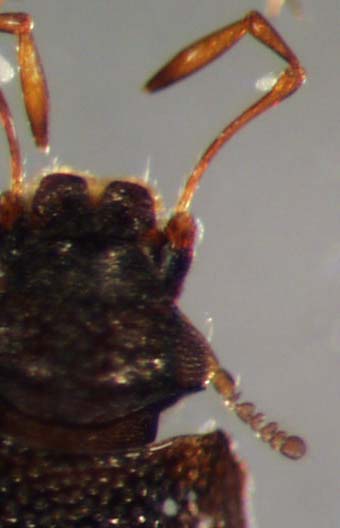 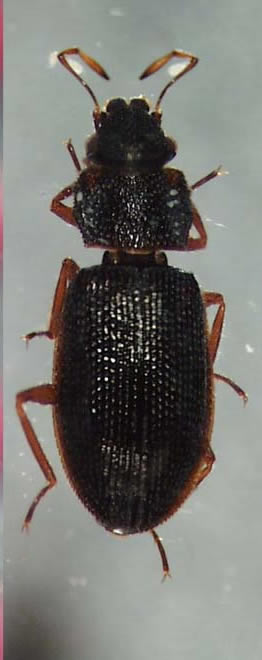 |
© 2007 Xerces Society
Contact info@xerces.org